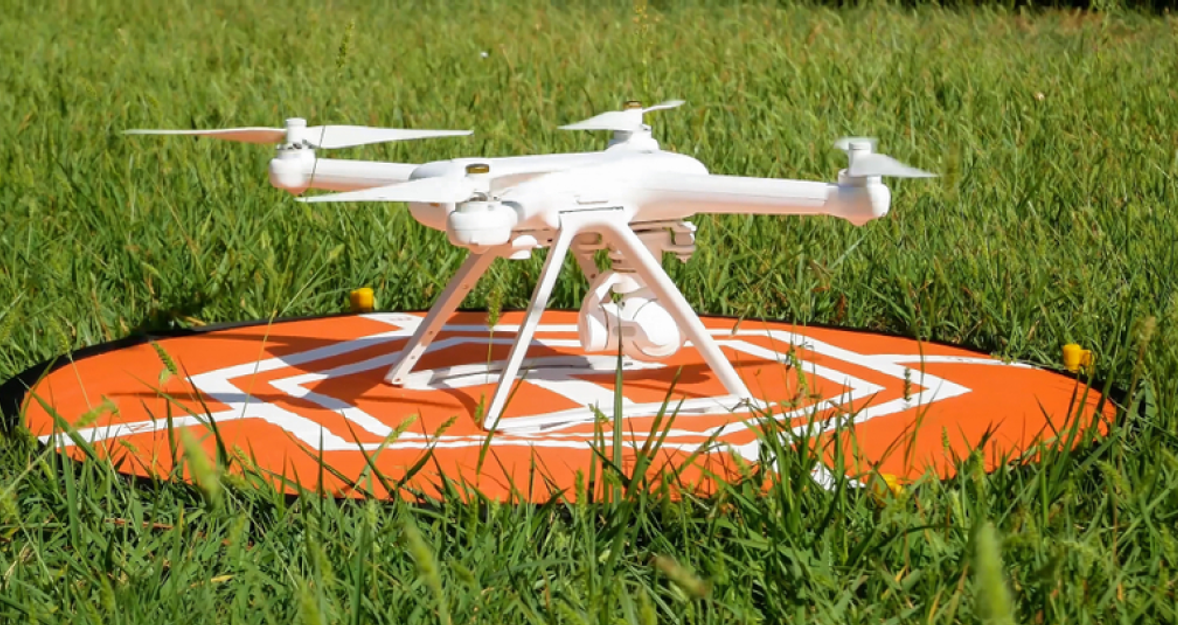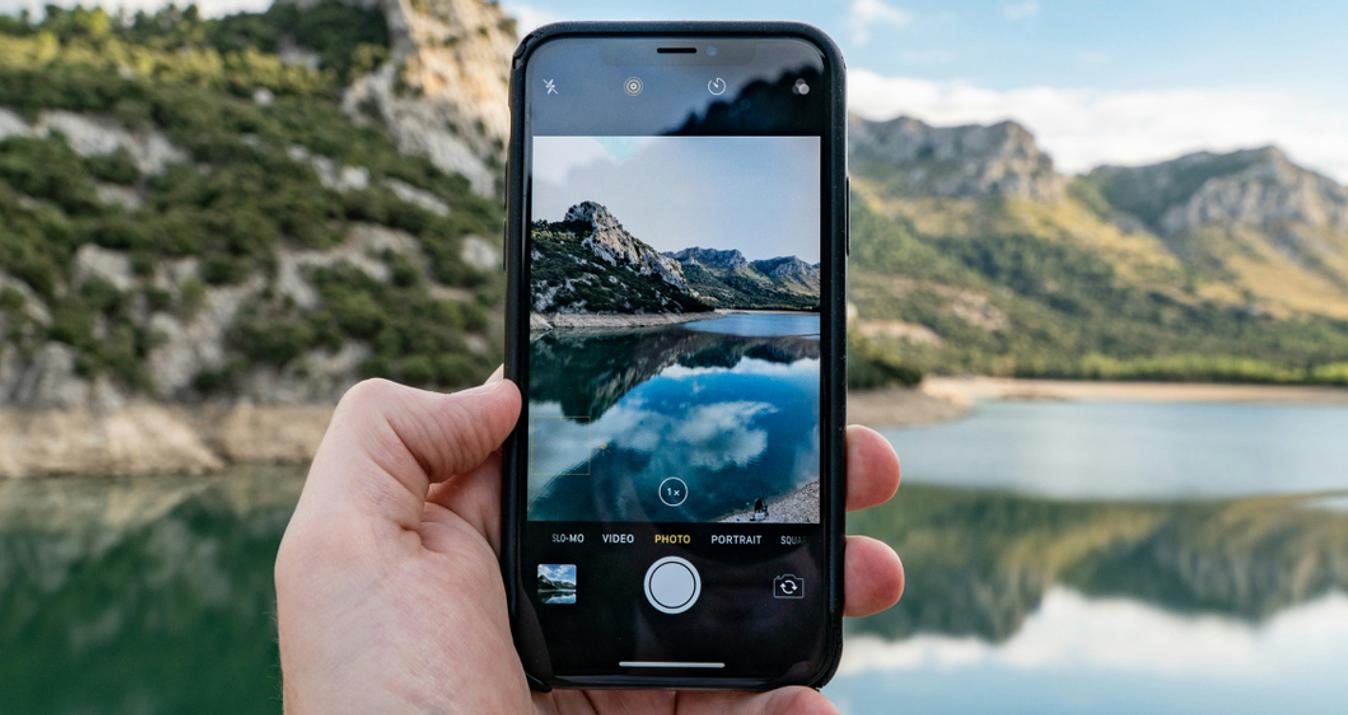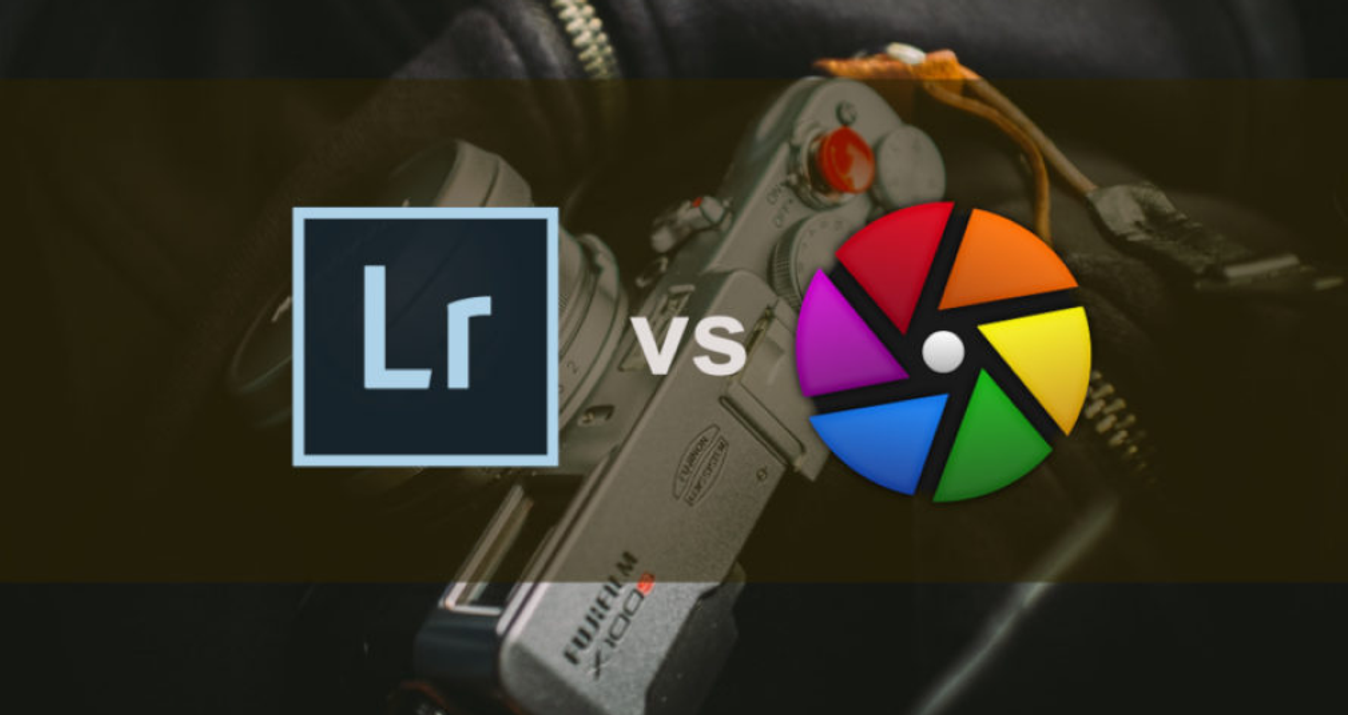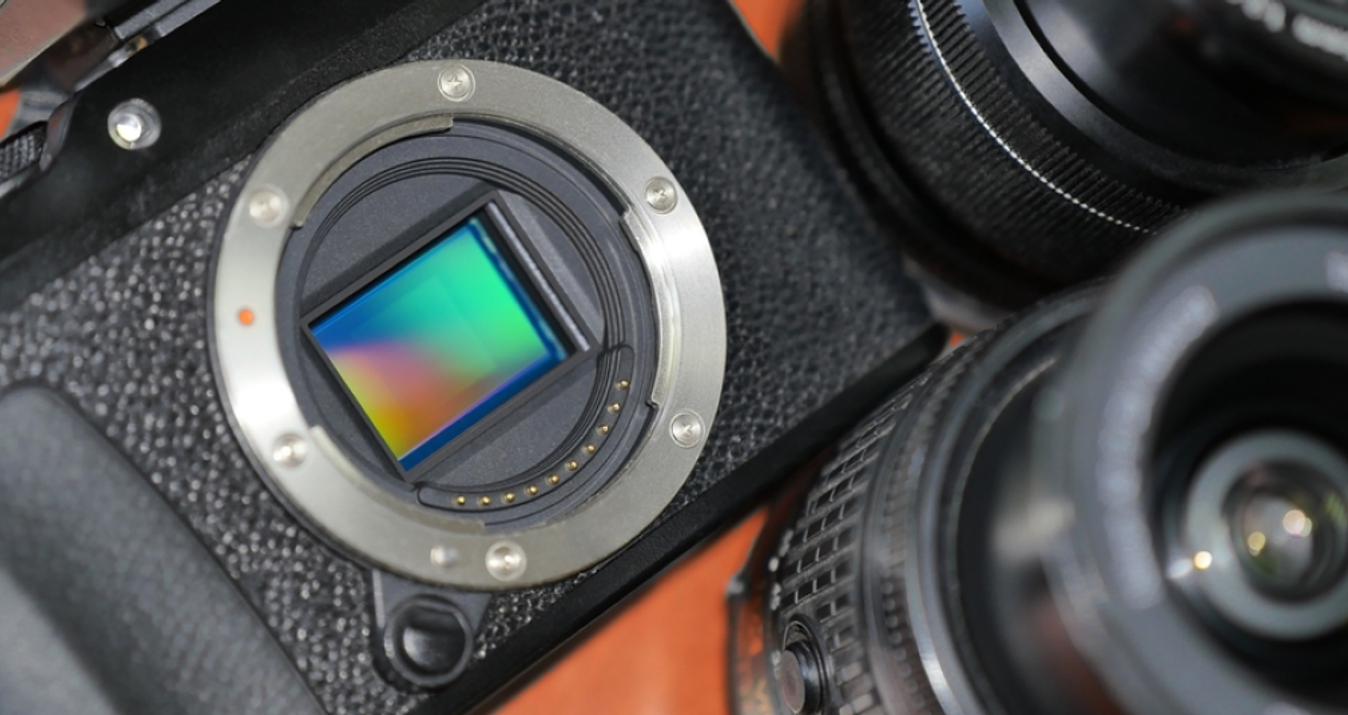Drone Landing Pad: How to Choose the Best One?
Last Updated on October 06, 2025

Protect your drone from dust, debris, and damage. Find out how to choose the right drone landing pad for smooth takeoffs and safe landings.
Drones are expensive, and it would be unwise to leave one without adequate maintenance. Most drone accidents and incidents happen during takeoff and landing. As a result, anything that helps make this stage of flying a little safer is worth the tiny expense. Landing pad for drone is one of the most commonly used attachments. This weave cannot float, yet it will make sure that your drone flies safely. Why? We will tell in this article.
What Is a Drone Landing Pad?
 A drone landing pad is a specialized platform used for the safe takeoff and landing of drones. It is a flat, typically foldable or portable mat (made of waterproof and wear-resistant material) that is placed on the ground. For novices, there are plenty of concerns and parameters that should be noticed.
A drone landing pad is a specialized platform used for the safe takeoff and landing of drones. It is a flat, typically foldable or portable mat (made of waterproof and wear-resistant material) that is placed on the ground. For novices, there are plenty of concerns and parameters that should be noticed.
What are the implications of such a platform? Think about a computer mouse. You can use it without a mouse pad, though the bottom will rapidly get scratched and unworkable. The same applies to drones.
Beyond protection, the best drone landing pad also helps with location testing, practicing precise landings, and improving your overall flying accuracy.
Why Do You Need a Landing Pad for Drone?
 Some pilots utilize a landing pad with a contrasting pattern to test exposure, white balance, and focus before taking the astonishing photos. However, without a drone landing pad, more usage of a photo editor on PC is required. For example, upon takeoff, the drone rattles, resulting in noise or a loss of focus in the initial frames.
Some pilots utilize a landing pad with a contrasting pattern to test exposure, white balance, and focus before taking the astonishing photos. However, without a drone landing pad, more usage of a photo editor on PC is required. For example, upon takeoff, the drone rattles, resulting in noise or a loss of focus in the initial frames.
Let’s look at the primary benefits of the landing pad for drones in the list below:
Pollution protection. During the flight and landing stages, the drone's blades generate airflow that collects tiny debris from the ground. This contains dust, sand, grass, and tiny rocks. The danger comes from these particles entering the drone's motors or destroying sensitive components like the lens or gimbals.
Sensor damage prevention. Drones are outfitted with downward-facing sensors that guarantee precise landings and obstacle detection. Scratches on the cameras can reduce their function, resulting in erroneous measurements.
Moisture resistance. If you fly in climates like Ireland, Scotland, or the tropics, the sensors may fail due to weather. You will also need to remove any dirt that has accumulated on the landing gear and blades.
A standard package contains the drone, remote control, batteries, charger, spare propellers, and cables. A landing pad is classified as optional equipment and must be purchased separately. However, some manufacturers and markets (such as Amazon or eBay) offer it in larger kits, such as the "Fly More Combo," "Bundle," and others. These additionally included a backpack, ND filters, and extra batteries.
Main Features to Look for in a Landing Pad for Drone
 Modern drones are controlled using mobile apps. When the operator engages the Return to Home feature or the autonomous landing mode, the drone employs visual sensors and GPS. A high-contrast, bright landing pad allows the drone's camera to "see" the landing place, and the software correctly runs the algorithm. Drone apps permit you to create automated missions (waypoints, circle flights, etc.). The landing pad for drone acts as a fixed beginning point: the drone begins the mission in the same location, and the app calculates the routes precisely.
Modern drones are controlled using mobile apps. When the operator engages the Return to Home feature or the autonomous landing mode, the drone employs visual sensors and GPS. A high-contrast, bright landing pad allows the drone's camera to "see" the landing place, and the software correctly runs the algorithm. Drone apps permit you to create automated missions (waypoints, circle flights, etc.). The landing pad for drone acts as a fixed beginning point: the drone begins the mission in the same location, and the app calculates the routes precisely.
Component | Description |
Material and Durability | Heavy-duty nylon and high-grade plastics are among the materials available. Nylon pads are lightweight and easy to move, whereas polymer-based pads are more robust and durable. Some high-end models may use metal components for extra weight and stability. |
Shape variations | Square or rectangular pads offer a larger surface area and can work more effectively in tight spaces. Hexagonal pads strike an exceptional balance between circular and square forms, providing sufficient landing space while remaining compact. |
Surface and Texture | A decent landing pad should have a nonslip surface to keep the drone from skidding, particularly in windy situations. Furthermore, the pad should be flat and smooth to prevent interference with the drone's sensors during landing. |
Drone parameters | Smaller drones can land on compact pads; however, bigger commercial drones require more expansive and durable landing places. It ought to have a pad that goes beyond the drone's footprint to allow for minor landing errors. |
Visibility and Design | Bright colors or distinctive shapes can enhance visibility for the drone's visual positioning systems. Reflective strips or illumination will assist the drone in locating the pad in low-light weather conditions. |
Pricing | Drone landing pad prices vary depending on the materials, drone size, and brand popularity. The low-cost range from $40 to $100. High-tech pads are priced at about $400-600. |
Non-slip textures, weighted edges, and stakes to anchor the pad in windy circumstances are all mandatory safety features. Some of the best drone landing pads have elevated borders, resulting in a more defined locating zone. Consider pads with optional extras such as lights for night flying or carry bags for simple hauling.
Types of Drone Landing Pads
Drone platforms vary greatly. They are created based on the user's requirements and the complexities of the shooting environment. This is necessary for photographers to comprehend because shooting isn't always optimal. So, what types of drone landing pads exist? Read on to find out.
Portable vs Permanent
Portable drone landing pads are useful equipment for pilots who prefer a lightweight, easily deployed platform. They are typically made of water-repellent fabric or thin plastic and fold easily to fit into a 30-40 cm diameter case. Their primary asset is mobility: the pilot can deploy one in a field, on the beach, or in the mountains, shielding the drone from dust, sand, rain, and long grass. Portable variants are great for travelers, aerial photographers, and owners of small drones such as the DJI Mini or Air series.
Permanent landing pads are constructions composed of concrete, rubber, metal plates, or composite materials. They are erected in areas where drones often take off and land, such as industrial zones, research sites, farms, or logistical centers. These landing pads for drone offer long-term stability, excellent visibility, and a level surface, and they can additionally contain incorporated markings, lighting, or charging systems.
Foldable Landing Pads
 Folding drone landing pads are the most handy and adaptable choice for pilots who regularly travel and operate their drones in a range of environments. They are composed of a tough, water-repellent material that is resistant to dirt and abrasion, and bright markings make the landing place visible even in hard environments like grass or sand. Other benefits include:
Folding drone landing pads are the most handy and adaptable choice for pilots who regularly travel and operate their drones in a range of environments. They are composed of a tough, water-repellent material that is resistant to dirt and abrasion, and bright markings make the landing place visible even in hard environments like grass or sand. Other benefits include:
quick deployment;
compactness;
versatility;
lightweight.
The dual-sided design provides an extra benefit: you may select a color that matches your individual environment, boosting visual control of the drone during autonomous landing. This is a magnificent option for travel, aerial photography, and on-location videography.
Heavy-Duty Options for Professionals
 Heavy-duty landing pads for drone are specifically built for professionals who require high reliability and stability. They are made of strong nylon with reinforced edges, reinforced plastic, or even rubber, so they can stay in place without the need for extra fasteners. Metal pegs can be utilized for additional rigidity, preventing movement during wind gusts.
Heavy-duty landing pads for drone are specifically built for professionals who require high reliability and stability. They are made of strong nylon with reinforced edges, reinforced plastic, or even rubber, so they can stay in place without the need for extra fasteners. Metal pegs can be utilized for additional rigidity, preventing movement during wind gusts.
The big diameter is useful for working with heavy drones such as the DJI Inspire, Matrice, or Autel EVO II Pro, which require a safe takeoff and landing area. The bright colors and high-quality markings allow you to observe the landing process clearly even from a considerable distance. Aerial videographers, surveyors, and cartographers, as well as search and rescue teams, prefer these drone landing pads.
Best Drone Landing Pads for 2025
Amazon, eBay, and other marketplaces are brimming with drones, ranging from those barely larger than your palm to those that are challenging to hold if you're not used to them. This is due to the rising acceptance of drone filming during trips and among amateur filmmakers. However, lots of them have a limited budget. What are the best drones for beginners in 2025? Check the table below.
Model | Diameter, ft | Portability | Weight, lbs | Pricing, $ |
Hoodman HDLP3 Landing Pad | 3.0 | Foldable/Fits in a 1.08 ft diameter bag. | 5.0 | $80 |
PGYTECH 75cm Landing Pad | 2.46 | Twist-fold. Packed in a 0.94 ft diameter case. | 0.77 | $20 |
STARTRC Drone Landing Pad, 65cm | 2.13 (square pad) | Foldable, easy to carry, with ground nails. | 1.43 | $45-50 |
FlatHat 16-Inch Landing Pad | 1.33 | Foldable and very compact. Fits into a 0.5-foot diameter case. | 0.22 | $30 |
PODEC Drone Landing Pad, 50 cm | 1.64 (square pad) | Foldable, comes with a carrying bag; dual-color (for visibility). Designed for quick deployment. | 1.17 | $30 |
AURTEC Drone Landing Pad | 2.62 | Folding, LED lights, and reflective elements, case. | 0.88 | $40-45 |
For your first drone, lightweight and compact drone landing pads such as the PGYTECH 75cm, STARTRC 65cm, PODEC 50x50cm, or FlatHat 16-inch are ideal, as they are simple to set up, inexpensive, and practical for learning. Experienced pilots flying larger drones and filming in demanding situations benefit from professional and stable models such as the Hoodman HDLP3 or AURTEC, which allow reliable and stable landings even on uneven or muddy surfaces.
Your AI-Powered Photo Editor for MacOS and Windows
Discover Now!Installation and Maintenance of a Drone Landing Pad
Portable platforms are known for their ease of setup. Your options should be limited to those that can be swiftly implemented. Why is this relevant? When it comes to drone photography in unpredictable weather conditions, rain isn't your greatest friend.
Some platforms may require regular cleaning to keep debris from gathering and interfering with the drone's sensors. As a result, following these easy principles can help to reduce the amount of time spent on photo editing for Instagram. Remember that effective filmmaking begins with taking care of your device.
FAQ
How to Test the Drone Landing Pads?
Test on various terrains by unfolding, fastening with stakes, and measuring wind resistance and rotor wash. A good landing pad for drone remains flat, does not shift, and shows little wear after many takeoffs and landings.
How to Choose the Right Size Landing Pad?
The pad should be at least twice the drone's diagonal length. Larger drones require 75-100 cm pads, although smaller versions do well with 50-60 cm.
Why Do You Need a Drone Landing Pad?
A drone landing pad keeps dust, moisture, and debris from harming sensors, gimbals, or propellers. It promotes precise compass calibration, particularly on uneven or magnetic surfaces, and assists pilots in identifying a clear landing zone.
What Are Drone Landing Pads Made Of?
High-quality pads are made of weatherproof nylon or polyester and have weighted or foldable steel rings that provide wind stability as well as protection from dirt, gravel, and grass.











